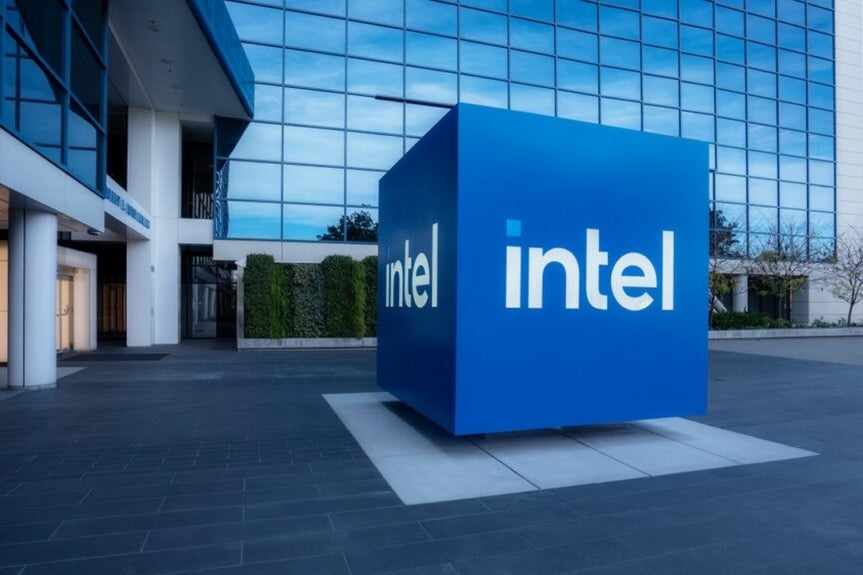Former Intel CEO Calls for Board Overhaul Amidst Breakup Debate
In a striking commentary that has captured the attention of the tech industry, former Intel CEO Craig Barrett has called for a comprehensive overhaul of the company’s board of directors. Barrett’s remarks come at a pivotal time as discussions regarding the potential breakup of Intel gain traction. Emphasizing the importance of refocusing on core chipmaking competencies, Barrett argues that the company’s leadership should prioritize innovation and operational excellence over strategies that may fragment the organization.
The Context of Barrett’s Call
Intel, once the undisputed leader in semiconductor manufacturing, has faced numerous challenges in recent years, including increased competition from firms like AMD and NVIDIA, as well as a shift in the market towards more specialized chip manufacturers. The company’s struggles have led to discussions about whether breaking up the business into smaller units could enhance agility and profitability.
Barrett, who led Intel from 1998 to 2005, believes that the solution lies not in division but in strengthening the existing structure. “The focus should be on winning in the chipmaking arena,” he stated, suggesting that the board should consist of members with deep industry knowledge and a commitment to Intel’s foundational goals. His perspective invites a broader discussion about the direction of the company and the role of its leadership.
The Case for Board Overhaul
Barrett’s call for a board overhaul raises several key points regarding what a restructured board could achieve:
- Industry Expertise: A board composed of individuals with extensive experience in semiconductors and technology can provide the strategic vision that Intel needs to reclaim its market position.
- Focus on Innovation: Emphasizing innovation over fragmentation can help Intel invest in cutting-edge technologies and research that drive long-term growth.
- Operational Efficiency: A fresh perspective on operational practices could enhance efficiency, reduce costs, and improve product delivery timelines.
Barrett advocates for a leadership team that understands the intricacies of chip production and the technological landscape. “We need visionaries who can navigate the complexities of the semiconductor industry,” he noted, reinforcing the idea that knowledgeable leadership is crucial for success.
Understanding the Breakup Debate
The debate surrounding the potential breakup of Intel is fueled by the perception that the company has become too large and unwieldy. Analysts have speculated that splitting the business could lead to more focused operations in areas such as data centers, personal computing, and Internet of Things (IoT) devices.
However, Barrett argues that breaking up Intel might lead to a dilution of its core competencies. “We must remember that Intel’s strength lies in its integrated approach to chip design and manufacturing. Fragmentation could hinder rather than help our ability to innovate,” he asserted.
Implications for Intel’s Future
Barrett’s insights have prompted a reevaluation of Intel’s strategic priorities. As the company navigates a rapidly changing landscape, several implications emerge from his recommendations:
- Strengthening Core Competencies: By focusing on chipmaking prowess, Intel can work toward reclaiming its leadership role in the semiconductor industry.
- Aligning Leadership with Vision: A restructured board could ensure that Intel’s leadership is aligned with the company’s long-term vision, fostering a culture of innovation.
- Engaging Stakeholders: Involving stakeholders in discussions about the board’s composition could enhance transparency and trust within the organization.
Barrett’s Legacy and Influence
Craig Barrett’s legacy at Intel is defined by significant advancements in technology and manufacturing processes. Under his leadership, Intel introduced the Pentium 4 processor and made substantial investments in research and development. His commitment to education and innovation continues to influence the tech sector today.
Barrett’s emphasis on a strong board reflects his belief in the importance of governance in navigating complex technological challenges. He has been a vocal advocate for STEM education and has contributed to various educational initiatives, further demonstrating his commitment to fostering the next generation of innovators.
Looking Ahead: A Unified Vision for Intel
As discussions about Intel’s future unfold, Barrett’s call for a board overhaul invites a critical examination of the company’s trajectory. The semiconductor industry is at a crossroads, and the decisions made today will have lasting impacts on Intel’s position in the market.
To move forward effectively, Intel must embrace a unified vision that prioritizes innovation and operational excellence. By aligning its leadership with these principles, the company can navigate the complexities of the current market landscape and emerge as a leader in the technology sector once again.
Conclusion
Craig Barrett’s advocacy for a complete overhaul of Intel’s board amidst breakup discussions is not just a call to action; it’s a reminder of the foundational strengths that have historically propelled the company to success. By focusing on enhancing its chipmaking capabilities and fostering a culture of innovation, Intel can position itself for a bright future in the rapidly evolving tech industry.
In the end, the conversation sparked by Barrett’s insights could lead to a revitalized Intel that honors its legacy while embracing the challenges of tomorrow. As stakeholders, employees, and customers watch closely, the potential for a transformative journey lies ahead—one where Intel can reclaim its status as a titan of technology.
See more Future Tech Daily

